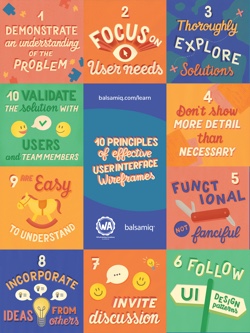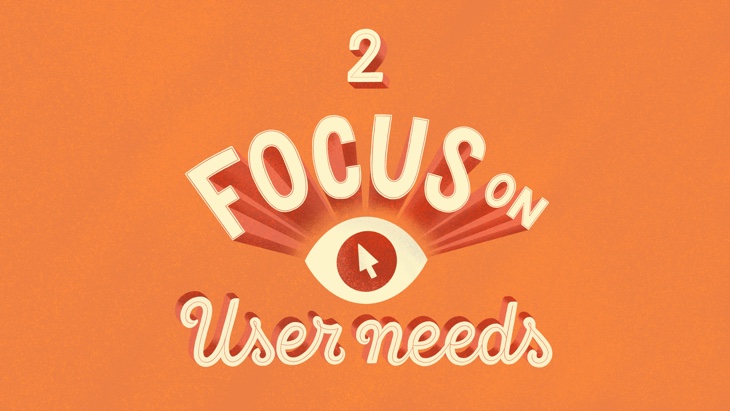Ever wonder how the companies you admire create great products? It’s not the tools they use and it’s not just their incredible UI designers or developers. It’s the process and culture they’ve cultivated around design.
Effective wireframes do much more than just show a picture of a user interface, they also facilitate discussion, promote alignment, and supply instructions for developers.
We created these 10 principles for teams that want help defining their own process for wireframing and designing successful products. They encourage the entire team to participate and serve to remind designers that wireframes aren’t complete without participation from others.

PDF format
JPG format

Principle 1: Demonstrate an understanding of the problem
Articulate the exact problem you’re trying to solve and who it impacts. Show the current workflow and what’s wrong with it.
Helps designers set the context for their solution.
Don’t start designing until you’re sure you know who you’re designing for, what they care about, and how the existing system works.
Helps teams see how the current system is not working.
Get buy-in by surfacing customer pain points and their impact on business metrics.

Principle 2: Focus on user needs
Ensure that what you design addresses a problem real users face and care about. People want solutions, not products.
Helps designers make sure they’re solving a real problem.
Remember to keep the users and their goals at hand. Write them as a note on your wireframe or in a notebook. Focusing on the user keeps you focused on solving the right problem.
Helps teams empathize with users.
When presenting work to stakeholders or clients, use your focus on user needs to build a shared understanding of the problems they encounter and how the design helps alleviate them.

Principle 3: Thoroughly explore solutions
Push beyond the first few obvious ideas. Don’t be afraid to go down unknown paths.
Helps designers discover novel solutions.
Wireframes are great for divergent exploration. Go broad. Real creative exploration requires leaps. Venture into the unknown even if it’s not feasible. Expand the possibilities and you’ll find yourself incorporating some of those novel ideas into your product.
Helps teams see the value in design.
Show the team how exploration and divergent thinking takes separate ideas and creates something entirely new from the best pieces of each.

Principle 4: Don’t show more detail than necessary
It’s natural to focus on small details when designing. Don’t get hung up on things that can be decided later.
Helps designers stay focused only on what needs to be designed or fixed.
Be deliberate about details. Too much will blur the focus on what really matters, too little will not properly communicate the intent of the design.
